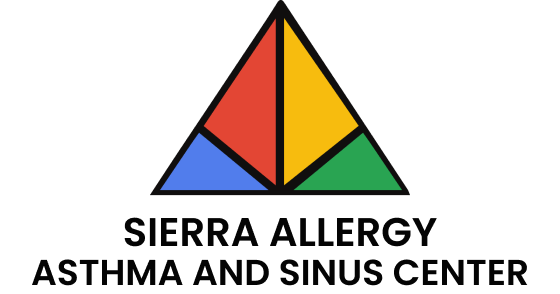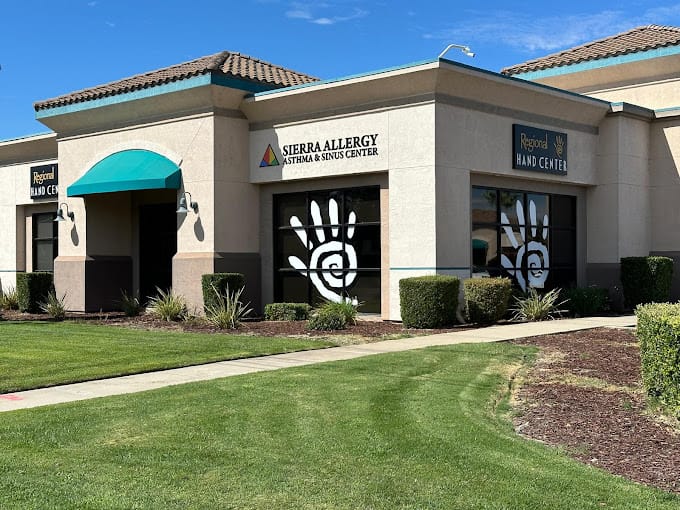Food allergies are a growing concern, affecting millions of people worldwide. Whether you’re a parent, a student, or simply someone who enjoys eating out, understanding food allergies is essential. A food allergy occurs when your immune system mistakenly identifies a particular food as harmful, triggering a range of symptoms that can vary from mild to severe. This blog will explore the most common food allergies, their symptoms, and how you can manage them with the help of a food allergist and immunologist.
What are food allergies?
A food allergy is an abnormal response by your immune system to certain foods. Unlike food intolerances, which involve the digestive system, food allergies involve the immune system and can be life-threatening. When someone with a food allergy consumes allergenic food, their immune system releases chemicals like histamines, leading to symptoms that can affect various body parts.
Common food allergies
Food allergies can occur with almost any food, but certain foods are responsible for the majority of allergic reactions. Here are some of the most common food allergens:
1. Peanuts
Peanuts are one of the most common and dangerous allergens. Reactions can be severe and often require immediate medical attention. Symptoms include hives, swelling, difficulty breathing, and anaphylaxis.
2. Tree Nuts
Another common allergen is tree nuts, including almonds, walnuts, and cashews. Like peanuts, they can cause severe reactions, and those with tree nut allergies are often advised to avoid all nuts to prevent cross-contamination.
3. Milk
Milk allergies, particularly in children, are common and can cause symptoms ranging from hives and vomiting to anaphylaxis. It’s important to distinguish between a milk allergy and lactose intolerance, which is not life-threatening but can cause digestive discomfort.
4. Eggs
Egg allergies are more common in children and often outgrown by adulthood. Symptoms can include skin reactions, respiratory issues, and digestive problems. Those with egg allergies must avoid foods containing eggs, even in trace amounts.
5. Wheat
Wheat allergies can cause a variety of symptoms, including hives, difficulty breathing, and gastrointestinal issues. It’s important to differentiate between a wheat allergy and celiac disease, which is an autoimmune condition triggered by gluten.
6. Soy
Soy is a common ingredient in many processed foods, making it challenging for those with soy allergies to avoid. Symptoms can include skin reactions, respiratory issues, and gastrointestinal problems.
7. Fish and shellfish
Fish and shellfish allergies are more common in adults and can cause severe reactions. Unlike some other food allergies, these tend to persist throughout life. Symptoms can include hives, swelling, and anaphylaxis.
8. Sesame
Sesame allergies are on the rise and can cause severe reactions. Sesame is often found in bread, snacks, and various cuisines, making it difficult to avoid.
Recognizing symptoms of food allergies
Understanding and recognizing the symptoms of food allergies is crucial, especially for those who have never experienced a severe reaction before. Symptoms can vary widely but often include:
1. Skin reactions
Hives, itching, eczema, or swelling of the lips, face, tongue, or throat.
2. Gastrointestinal symptoms
Nausea, vomiting, diarrhea, or stomach cramps.
3. Respiratory symptoms
Wheezing, coughing, nasal congestion, or difficulty breathing.
4. Cardiovascular symptoms
Dizziness, light headedness, fainting, or a rapid or weak pulse.
5. Anaphylaxis
A severe, life-threatening reaction that requires immediate medical attention. Symptoms include difficulty breathing, a drop in blood pressure, and loss of consciousness.
Managing food allergies
Managing food allergies effectively requires a comprehensive approach, often guided by a food allergist and immunologist. Here are some key strategies:
1. Consult a food allergy specialist
If you suspect you have a food allergy, it’s crucial to consult with a food allergist and immunologist. They can conduct tests to confirm the allergy and help you develop a personalized management plan.
2. Read labels carefully
Food labels are your first line of defense. Always check ingredient lists for potential allergens and be aware of cross-contamination warnings.
3. Carry an epinephrine auto-injector
For those at risk of anaphylaxis, carrying an epinephrine auto-injector (like an EpiPen) is essential. Ensure that you and those around you know how to use it in case of an emergency.
4. Educate yourself and others
Knowledge is power. Educate yourself about your allergy and ensure that friends, family, and coworkers are aware of your condition. This can help prevent accidental exposure and ensure a quick response if a reaction occurs.
5. Create an action plan
Work with your allergist to create an action plan that outlines what to do in case of an allergic reaction. This plan should include symptoms to watch for, steps to take, and emergency contact information.
Living with food allergies
Living with food allergies requires constant vigilance, but it doesn’t have to limit your life. With proper management and support from a food allergist, you can enjoy a healthy, active lifestyle. It’s also important to stay informed about new treatments and research, as the field of allergy and immunology is continually evolving.
When to see a food allergy specialist
If you suspect you have a food allergy or if you’ve experienced symptoms after eating certain foods, it’s important to consult a food allergy specialist. They can perform tests to diagnose the allergy and help you navigate your dietary restrictions safely.
Conclusion
Food allergies are a serious concern, but with the right knowledge and tools, they can be managed effectively. By understanding common food allergens and their symptoms, you can protect yourself and your loved ones. Remember, when in doubt, always consult with a food allergist and immunologist to ensure you’re taking the best steps for your health.





